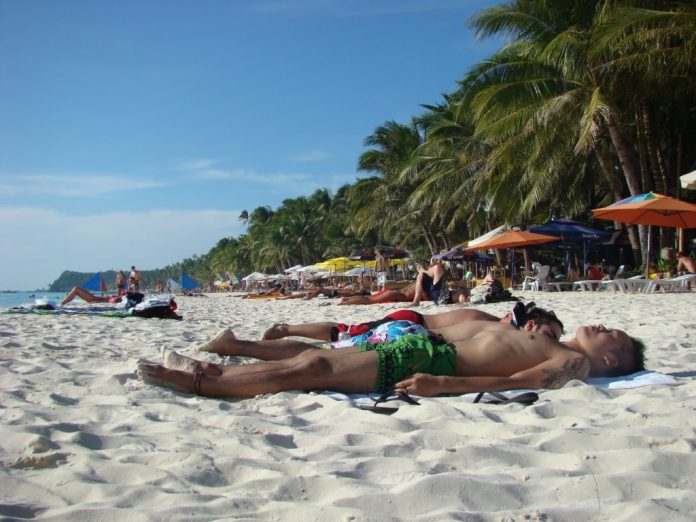
MANILA – President Rodrigo Duterte has approved the recommendation to close Boracay Island for six months.
It would be a total closure to tourism, said Presidential Spokesman Harry Roque.
The President reached such decision during a meeting with his Cabinet last night.
He would also declare Boracay under a state of calamity, said Roque.
The closure begins on April 26 as proposed by the Department of Environment and Natural Resources, Department of the Interior and Local Government and the Department of Tourism to pave the way for the island’s rehabilitation.
Senior Deputy Executive Secretary Menardo Guevarra told Panay News “calamity funds will be activated to tide affected workers over.”
The Department of Trade and Industry earlier warned of the closure’s adverse effects on businesses and livelihood in Boracay and suggested that the closure be carried out by phases.
There was “an exhaustive discussion” at the Cabinet meeting, said Guevarra.
Roque announced the President’s decision at 9:32 p.m. through Twitter.
“Bora closed for 6 mos effective 26 April,” he twitted.
In February, Duterte likened Boracay to a cesspool, citing the island’s wastewater problem.
The Department of Social Welfare and Development (DSWD) is readying a comprehensive plan of action to address the adverse effects of the island’s closure, said officer-in-charge Emmanuel Leyco yesterday.
Potential problems include islanders losing homes and livelihood, especially residents who are beneficiaries of DSWD’s poverty-alleviation programs, as well as vulnerable senior citizens and their families, said Leyco.
According to Environment secretary Roy Cimatu, fueling Boracay’s degradation over the years were runaway development, the influx of people beyond the island’s carrying capacity, poor implementation of environmental regulations, and encroachment of structures.
In February, Cimatu deployed a “mission team” to address the environmental woes in the world-famous island. The team was composed of 50 personnel from six regional offices of the Environment department.
Boracay was divided into six areas. Each of the six DENR regional offices was assigned an area to work on.
Leyco said DSWD programs and services such as the Sustainable Livelihood Program (SLP), Cash-for-Work (CFW), and Assistance to Individuals in Crisis Situation (AICS) can be accessed by affected families on the island.
The SLP provides employment and income opportunities among the poor who want to seek employment. If they have business potentials, they are given capital to start with.
The CFW is a short-term intervention implemented by the DSWD to provide temporary employment to distressed or displaced individuals by involving them in preparedness, mitigation, relief, rehabilitation or risk reduction projects and activities – usually in their communities or in evacuation centers.
On the other hand, AICS is the department’s program that provides different assistance whenever a client loses a job, has a problem with funeral or transportation costs, needs educational assistance, or is facing medical expenses. (With a report from the Philippine News Agency/PN)



